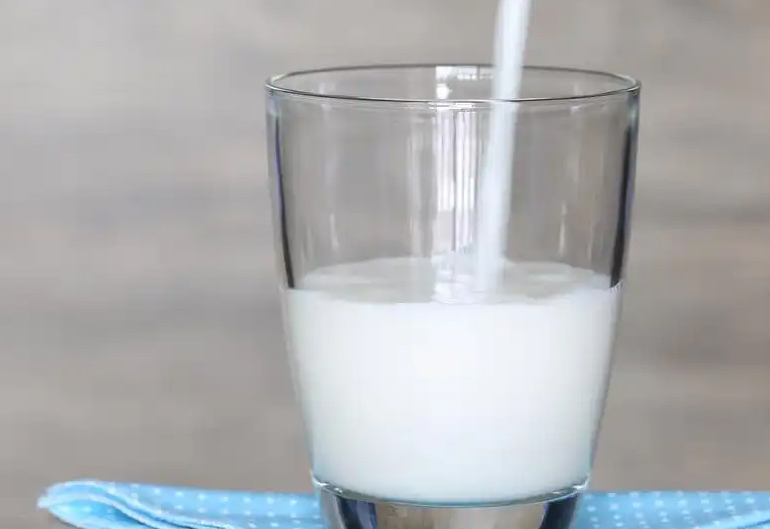Which is more nutritious and safer, lard or vegetable oil?
During the winter solstice, the earth is frozen and the sky is cold. Some families are accustomed to cooking food with lard in order to make it full of calories and rich in aroma. It is said online that lard is rich in vitamins D and B, with higher nutrient content than any vegetable oil. Moreover, due to its low commercialization, lard does not have many additives like vegetable oil. So, is lard really purer, safer, and more friendly to the human body than vegetable oil? We can take a look at Professor Fan Zhihongs interpretation from the School of Food Science and Nutritional Engineering at China Agricultural University.
Question 1: Is lard more vitamin rich than vegetable oil?
Pig fat contains four fat soluble vitamins, namely VA, VD, VE, and VK. VA only exists in animal based foods, and there is no VA in vegetable oils. Some vegetable oils appear pale yellow because they contain a small amount of carotenoids, namely vitamin A, but their content decreases after refining. So, vegetable oil is not an effective source of VA.
According to the data in the Chinese Food Composition Table (Standard Version), 100 grams of refined lard contains 27 micrograms of VA, which is indeed higher than most vegetable oils, but its significance is not significant. Because the storage warehouse for VA is actually animal liver rather than fat, chicken liver, duck liver, goose liver, pig liver, and sheep liver are all good choices for supplementing VA. For example, according to the data in Chinas food composition table, 100 grams of broiler liver contains nearly 3000 micrograms of VA.
In addition to animal liver, some orange yellow and dark green vegetables and fruits can also provide vitamin A, and their effectiveness in supplementing VA is higher than that of lard. For example, according to the data in the food ingredient table, 100 grams of Chinese cabbage has a calorie value of only 14 kcal, but it can convert 154 micrograms of VA in the human body. Eating 100 grams of refined lard can only yield 27 micrograms of VA and consume 897 calories. It is obvious that eating lard to supplement VA is not cost-effective.
Then lets talk about VD. VD almost only exists in animal based foods, with zero content in vegetable oils. However, VD, like VA, is mainly stored in the liver. In theory, animal fat is not a storage location for VD, and the content in lard is unlikely to be very high. So, cooking with lard doesnt have much significance in supplementing daily VD needs. As for the online video claiming that the VD content in lard exceeds 1000 international units, no data source has been provided. There is no VD content data for lard in the Chinese food ingredient list. According to the US Department of Agricultures food nutrition database, only 102 international units of VD2 and D3 are present in 100 grams of lard.
Speaking of VE. Refined lard does contain VE, with a content of up to 5.2 milligrams (per hundred grams), but compared to vegetable oil content, this data will undoubtedly be crushed. For example, according to the food ingredient table data in China, 100 grams of rapeseed oil contains 60.9 milligrams of VE, and 100 grams of soybean oil contains 93.1 milligrams of VE.
Finally, lets talk about VK. The VK content in lard is extremely low and almost undetectable. And vegetable oils generally contain VK, with soybean oil and rapeseed oil having the highest content, followed by olive oil.
In addition, although there is a little bit of B vitamins in the fat of pigs, all B vitamins are water-soluble and insoluble in oil. So the vitamin B1 in refined lard B2、 Niacin and vitamin B12 content are both very low and can be basically ignored.
In short, the claim that eating lard is more effective in supplementing vitamins than eating vegetable oil is not fully justified.
Question 2: Is lard lower in commercial level and less polluting than vegetable oil?
This statement is biased. As one of the by-products of pork processing in slaughterhouses, lard has always been commercially available. Supermarkets and vegetable markets can buy lard everywhere, and it is also widely used in the processing of various Dim sum, snacks and dishes. In recent years, the price of refined lard per kilogram has usually been above 20 yuan, which is more expensive than soybean oil, rapeseed oil, and palm oil, and there is no situation where "lard is difficult to commercialize".
Some people believe that vegetable oil contains food additives, while lard does not, but it is not necessarily the case. Fan Zhihong analyzed that commercially available vegetable oils may add synthetic antioxidants such as TBHQ, BHA, BHT, or natural antioxidants such as vitamin E to extend shelf life and delay fat oxidation. However, commercially available refined lard may also contain antioxidants. Although lard is more saturated than most vegetable oils, it also requires antioxidant protection due to the much lower natural content of vitamin E in lard compared to vegetable oils. Of course, there is no need to worry about the safety of additives used according to national standards.
It is true that homemade lard does not add antioxidants, but homemade lard is often not as pure as commercially produced, often with trace amounts of moisture and iron ion residues, making it more prone to oxidation and deterioration. After refining, it must be consumed as soon as possible.
At the same time, when refining lard at home, due to the inability to accurately control the firepower, overheating of the fat can produce harmful heterocyclic amines, polycyclic aromatic hydrocarbon carcinogens, and advanced glycation end products (AGEs) that promote aging. Especially for those darker colored and more fragrant lard residue, it is even more so. Therefore, household refined lard should not be consumed frequently or excessively.
Speaking of environmental pollutants in oils and fats. According to the basic laws of ecology, for every increase of one trophic level, the recalcitrant pollutants will increase by about 10 times. From this perspective, compared to the same amount consumed, the amount of environmental pollutants obtained from eating lard is likely to be higher than the amount obtained from eating vegetable oil.
Question 3: Does lard have a higher cholesterol content than vegetable oil?
The answer to this question is affirmative. Because plants themselves do not synthesize cholesterol, vegetable oils are also zero cholesterol foods. Plants can synthesize plant sterols, including sitosterol, stigmasterol, and brassinosteroids. For example, 100 grams of sesame oil contains 588 milligrams of plant sterols, and 100 grams of soybean oil contains 317 milligrams of plant sterols. In the process of digestion and absorption, plant sterols compete with cholesterol, so consuming more plant sterols can lower the absorption rate of cholesterol in food, and the level of blood cholesterol in the human body may decrease.
Pig fat does contain cholesterol. According to Chinas food ingredient list, 100 grams of pig fat contains 110 milligrams of cholesterol, which most healthy people do not need to worry about.
For example, if you eat 25 grams of lard a day, theoretically you will eat 28 milligrams of cholesterol. For healthy people, this amount is not a concern. However, for those who seek medical advice to control blood cholesterol, the daily cholesterol limit is 200 milligrams, with 28 milligrams accounting for 14% of 200 milligrams, so it is necessary to control it appropriately. Fan Zhihong suggests that people with high blood lipids should avoid using animal oil, including lard, for cooking as much as possible. Its better to use the limited portion of cholesterol to eat fish, shrimp, and lean meat.
Pork fat and vegetable oil have always complemented and coexisted in our diet. The specific type of cooking oil to use depends on our physical condition, daily dietary structure, fatty acid balance, and cooking temperature. Simply put, people who eat less meat and more soy products are suitable for using lard or butter, while those who eat more meat do not need to buy lard specifically for cooking.
From the perspective of supplying vitamin E and vitamin K, as well as food safety, lard does not have an advantage. Consumers do not need to blindly believe in "online rumors" and regard lard as their main cooking oil or even nutritional supplement. They also do not need to be overly afraid of lard due to cholesterol issues. After all, lard is not a pure saturated fatty acid and its cholesterol content is not that high.



